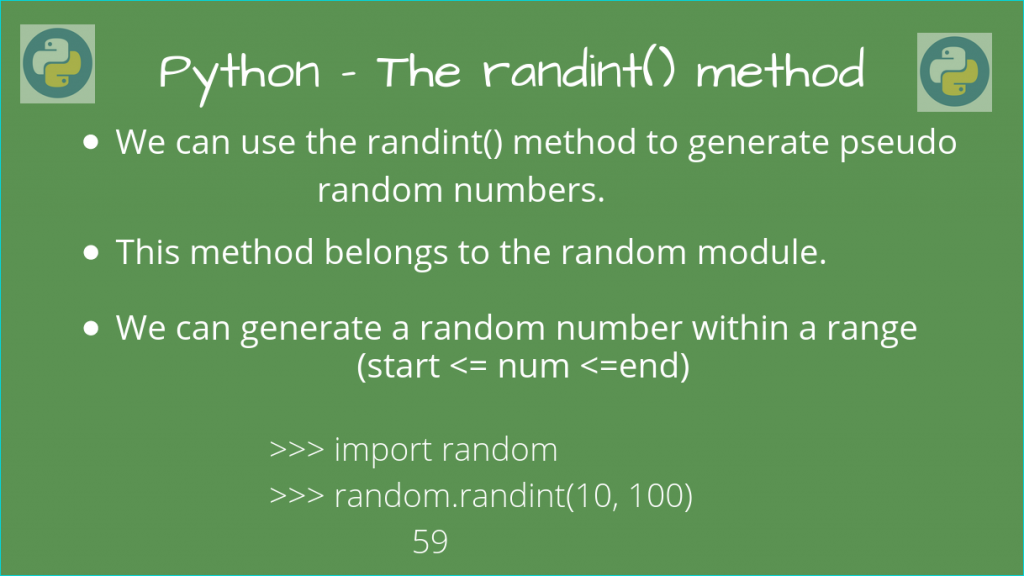In this article, we’ll take a look at generating random integers using the Python randint() method.
This method is in the random module in Python, which we will use to generate pseudo-random numbers, so we’ll need to import it to load this method. Let’s take a look at this method now!
Syntax of Python randint()
The Python randint() method returns a random integer between two limits lower and upper(inclusive of both limits). So this random number could also be one of the two limits.
We can call this function as follows:
random_integer = random.randint(lower, upper)
Here, lower is the lower limit of the random number, and upper is the upper limit of the random number.
We must ensure that lower and upper are integers, and that lower <= upper. Otherwise, a ValueError Exception will be raised.
Let’s take a look at how we can use this function now.
Using the Python randint() method
We’ll need to import the random module. After that, we can call the function using the syntax.
import random
beg = 10
end = 100
# Generates a random integer between (10, 100)
random_integer = random.randint(beg, end)
print(f"A random integer between {beg} and {end} is: {random_integer}")
Possible Output
A random integer between 10 and 100 is: 59
Indeed, we can see that this number does lie between the range (10, 100).
If we want to repeat this pseudo-random generation, let’s use a loop for that.
import random
beg = 0
end = 100
rand_list = [random.randint(beg, end) for _ in range(10)]
print(rand_list)
Possible Output
[61, 16, 39, 86, 25, 11, 16, 89, 99, 70]
We can see that these numbers are in the 0 to 100 range. And the pseudo-random conditions indicate that no two consecutive numbers repeat.
NOTE: As I mentioned earlier, both beg and end must be integers, with beg <= end. Otherwise, we will get a ValueError Exception.
Conclusion
In this article, we learned how we could use the randint() method in Python, to generate random integers.
References
- Python Official Documentation on the random module
- JournalDev article on the randint() method
